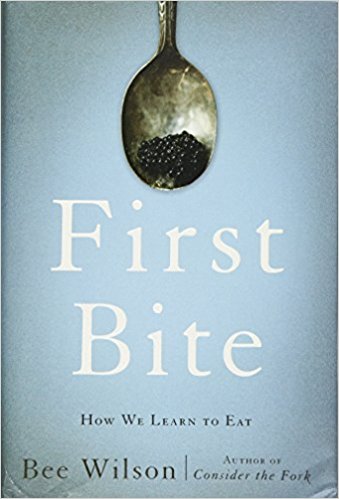First Bite Summary
7 min read ⌚
How We Learn to Eat
You’re on a strict diet for the seventh time this year, but, for some reason, you have to try that new pizza at your favorite restaurant. Also, a tiny piece of cake: what’s the point in having lunch and not a dessert after? And why do these dishes ape your willpower over and over again?
What if – Bee Wilson asks – you like certain foods because they remind you of your childhood? And what if there’s a way to circumvent the power of your “First Bite”?
Who Should Read “First Bite”? And Why?
Unfortunately, a small percentage of people today eat healthily.
Even though most of us are aware that sugar and fast food are not exactly the right choice for anybody. Even worse, the majority of parents would rather allow their children to eat once a week at “McDonalds” and convince themselves that it’s not that bad than experience another apocalyptic tantrum from them?
“First Bite” is for parents who want to change that. Both for themselves, but, more importantly, for their children. So, if you are a parent and want to learn what you can do better regarding your child’s eating habits – read this book. Do the same if you yourself want to have a healthier diet.
It’s never too late to start doing the right thing.
About Bee Wilson
 Bee Wilson is a bestselling British writer on food and food-related matters.
Bee Wilson is a bestselling British writer on food and food-related matters.
She worked as a food critic for the “New Statesman” magazine for five years, before starting the “Kitchen Thinker” column in “Stella.” In addition, she has written for “The Guardian,” “The Times Literary Supplement,” and “The Sunday Times.”
She published her first book, “The Hive,” in 2004. Since then, she has published four more: “Swindled,” “Sandwich,” “Consider the Fork,” and “First Bite.”
“First Bite Summary”
If you are a parent, you already know how it is: every second meal of your child is a battle on the scale of the Second World War. And, you know what, we get it: after a while, it’s easier to surrender. Even if that means feeding your child cereals instead of vegetables for breakfast!
But, what if what he or she eats as a child is a one-way portal to his adult eating habits?
Think about it!
Much of our worldview is built by way of comparison. If you haven’t been to – or even seen a picture of – Vienna and Prague, your hometown may be the best place you’ll ever visit. The same holds true for food: if you hadn’t eaten a lot of sugar as a child, apples might taste to you sweeter than chocolate.
Don’t believe us?
A 2012 study revealed that, to some people, a cob of corn or a ball of mozzarella is sweeter than cereals!
The reason?
You’ve guessed it: they didn’t consume a lot of sugar as children!
But, how do you do that? How do you teach your children to eat healthy food? How do you prevent the inevitable: them throwing away the broccoli and stealing a bar of chocolate instead? After all, don’t most children have only one thought on their minds for the first decade of their lives: “Get candy!”?
In 1939, in the September edition of the Canadian Medical Association Journal (CMAJ), Clara Marie Davies published an article titled “The Self-Selection of Diets by Young Children,” which presented the results of a study examining the behavior of children’s food habits.
At four pages, you wouldn’t expect the article to be called, seven decades later, “a fountainhead of argument, discussion and reinterpretation for everyone hoping to untangle the modern gnarl where children’s appetites, food choices and health collide.”
The experiment – that is, “the world’s longest, most detailed and most ambitious dietary experiment” – was relatively simple. Namely: give few children a selection of 33 foodstuffs every day for four and a half years, and never even hint to them what is the better choice or the proper amount to eat.
The results were staggering!
First of all, every single one of the 15 examined children tried each and every one of the dishes available! Secondly, no two followed the same diet pattern. Thirdly – not one child settled for the now-predominant cereal-and-milk diet. And finally – they all grew up to be healthy, well-nourished children!
But, how did they do it? How were they capable of balancing their diets so neatly and correctly?
“Such successful juggling and balancing,” concluded Davis, “of the more than 30 nutritional essentials that exist in mixed and different proportions in the foods from which they must be derived suggests at once the existence of some innate, automatic mechanism for its accomplishment.”
What does this mean in laymen’s terms?
Just make a selection of foods for your child – and let him or her choose the one he or she would like to eat the most. Each day. For an extended period of time. And when he/she chooses a Hershey’s bar over a carrot, don’t worry: that doesn’t mean that your child has stopped eating vegetables!
After all, evolution works for both of you: you wouldn’t have been here if you didn’t have an innate mechanism to choose the right food!
What parents are actually doing when forcing their children to eat something they don’t like at a particular moment is activating another mechanism which has much more to do with psychology than eating habits.
Namely, humans don’t like to be forced into doing anything. And, more often than not, they tend to develop an intrinsic revulsion towards what they had been pressed to do contrary to their wishes. It doesn’t matter if it is piano classes or a beetroot. Forcing won’t work.
Unfortunately, parents nowadays deal with an even more severe problem.
Namely: TV. And large corporations.
Did you know, for example, that about three-fourths of the food marketed to children has disgracefully low nutritional value?
We asked before and here we ask one more time: how is this allowed?
Key Lessons from “First Bite”
1. Children Will Usually Choose the Healthy Snack – If You Let Them
2. Learn to Distinguish Appetite from Hunger
3. Countries – Be More Like Japan!
Children Will Usually Choose the Healthy Snack – If You Let Them
Over 80 years ago, a Canadian scientist decided to conduct an experiment – which, nowadays, may even seem a bit unethical. Namely, to make a selection of 33 different foods for 15 children and carefully examine their food behaviors for a long period of time.
The trick?
She wasn’t allowed to tell them what to eat and when to eat at no point in the experiment.
The result?
Fascinatingly enough, all children tried each of the foods selected for them. Moreover, not one of them opted for a cereal-and-milk diet. And yes – they all grew up well-nourished and healthy.
The moral?
Don’t force your child into eating things she/he doesn’t want to. Make a selection of foods and let him/her choose.
Learn to Distinguish Appetite from Hunger
As the experiment with the children’s dietary habits shows, our distant relatives – and by distant, we mean the ones who first put the “sapiens” in our taxonomical status – had internal regulating mechanism when it comes to food.
That’s why, they were rarely – if ever – fat. Because of all those marketing campaigns and multinational fast food chains, that mechanism is messed up nowadays. Namely, most people can’t make a distinction between appetite and hunger. And confuse the first with the latter.
However, the first leads to obesity; the second is the last spark of our ancestors’ dietary regulatory mechanisms.
How can you distinguish them?
Start skipping meals. You’ll see that it’s not that bad. When it does get bad – that’s hunger. It’s a state of the body – believe us! – you’ve probably never experienced before.
Countries – Be More Like Japan!
Japan is both a small island country and the third largest economy in the world, so we suppose the title applies to many areas. However, for the time being, we’re interested in no more than one. Namely, food habits.
You see, even though the words rhyme, there are almost no obese Japanese! And the Japanese nation is, on average, the fifth longest-living in the world – with all those above her, some of the smallest countries and least populated countries in the world (Monaco, Macau, San Marino, Andorra).
And in Japan, there are more than 120 million people living!
So, how did they do it?
Well, obviously – with a nationwide campaign. You’ll be surprised to learn that today’s Japanese diet is no more than few decades old.
So, why shouldn’t we do the same in the U.S.?
After all, we have a serious, serious problem with obesity!
Like this summary? We’d like to invite you to download our free 12 min app, for more amazing summaries and audiobooks.
“First Bite” Quotes
The way you teach a child to eat well is through example, enthusiasm, and patient exposure to good food. And when that fails, you lie. Share on X No one is doomed by genes to eat badly. Pickiness is governed more by environment than biology. Share on X Eating well is a skill. We learn it. Or not. It’s something we can work on at any age. Sugar is not love. But it can feel like it. Share on X A few decades from now, the current laissez-faire attitudes to sugar - now present in 80 per cent of supermarket foods - may seems as reckless and strange as permitting cars without seatbelts or smoking on aeroplanes. Share on X When eating becomes a matter of life or death, and each new bite is a celebration, you may discover that none of the other stuff was quite as important as sitting and breaking bread together. Share on XOur Critical Review
“First Bite” – as a review in the “Wall Street Journal” noted – is a real treat!
Described as a book “about the pleasure of eating and how we can reconnect with this,” “First Bite” won several awards, including Food Book of the Year. Scientifically sound and applicable, the book is a joy to read. Do yourself a favor and read it.
After all, you’ll be doing your children an even bigger one.
Emir is the Head of Marketing at 12min. In his spare time, he loves to meditate and play soccer.








